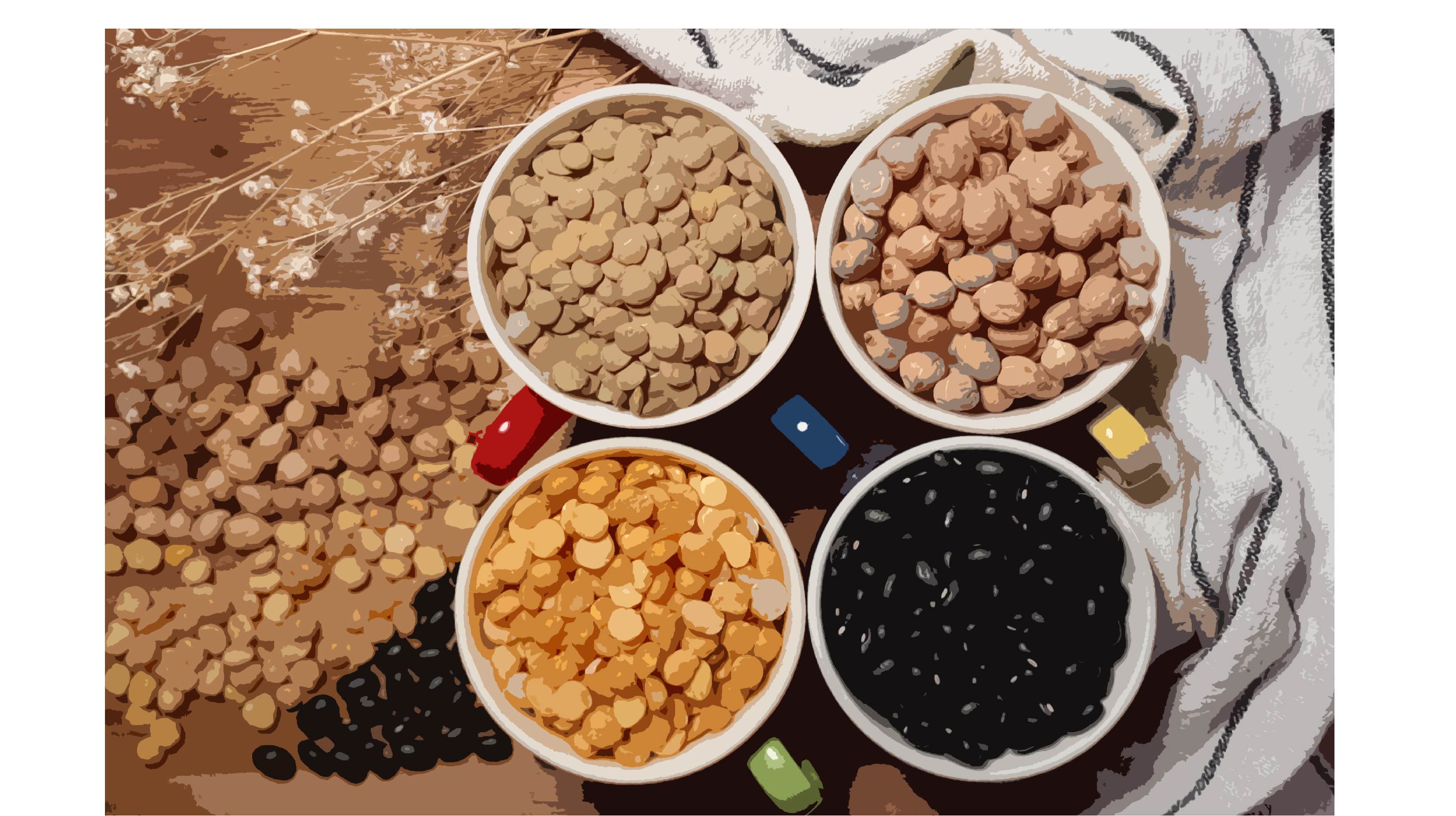Antinutrients in plant-based foods: are they good or bad for our health?

This post is also available in:
This post is also available in:
![]() Français (French)
Français (French) ![]() Deutsch (German)
Deutsch (German) ![]() Nederlands (Dutch)
Nederlands (Dutch) ![]() हिन्दी (Hindi)
हिन्दी (Hindi) ![]() العربية (Arabic)
العربية (Arabic) ![]() Türkçe (Turkish)
Türkçe (Turkish) ![]() Ελληνικά (Greek)
Ελληνικά (Greek) ![]() Português (Portuguese (Brazil))
Português (Portuguese (Brazil)) ![]() polski (Polish)
polski (Polish)
Did you know that soaking beans in water before cooking is good for your health?
Besides being a common practice in some cultures, not everyone knows the science behind this habit.
Before answering this question, let me introduce the concept of antinutrients. Antinutrients are components present in all edible crops, such as legumes and cereals, for example, beans, peas, soybeans, fava beans, lentils, chickpeas, oat, rice, quinoa, and wheat. Antinutrients are present in plants as a defense mechanism against predators, and their concentrations can vary according to the cultivar and growing conditions.
From a nutritional point of view, antinutrients can be bad for our health because they reduce our ability to digest and absorb other essential nutrients like proteins, starch, minerals, and vitamins. Now, let’s learn a bit more about some antinutrients and their effects on our health.
Inhibitors of digestive enzymes: reduce the digestion of proteins and starch. Present in soybeans, fava beans, peas, beans in general, oat and chickpeas.
Phytate: reduce the absorption of iron, zinc, calcium, and copper. Most are present in beans, lentils, peas, soybeans, rice, and wheat.
Tannins: a phenolic compound known to cause bitterness when present in high amounts in foods. Tannins can reduce the absorption of iron and the digestion of proteins. Some of the main sources are beans, peas, and chickpeas.
Saponin: reduce the absorption of vitamins and the digestion of proteins. The main sources are quinoa, wheat, and beans.
Lectins: can bind to carbohydrates in the red blood cells increasing the risk of blood clots. They can also cause nausea, diarrhoea, vomiting, and bloating. Present especially in beans and peas.
Vicine and convicine: present in faba beans can cause acute hemolytic anaemia, also known as favism, but only in individuals with the genetic deficiency of the enzyme glucose-6-phosphate dehydrogenase that is essential for the survival of red blood cells.
Oxalates: reduce the absorption of minerals, especially calcium, and can increase the risk of renal stones and mineral deficiency.

Considering the negative effects of these components, consumers may worry about buying plant-based products made from legumes or cereals as they are quite popular nowadays. But this should not be a concern, since processed plant-based foods have reduced amounts of antinutrients. The reason behind this is that the food industry applies strategies to reduce/remove antinutrients from plant sources such as fermentation, extrusion, microwaving, and autoclaving. You can also reduce the amounts of these components at home by soaking the legumes, for instance, in water followed by cooking. The science behind these strategies is that some of the antinutrients are soluble in water,
thus, being washed away after soaking. Besides, antinutrients are also destroyed during heating processes such as boiling or cooking. Besides the negative effects that antinutrients might impose on our health, recent research is proving the opposite. Some of the antinutrients are associated with anticarcinogenic, antioxidant, anti-inflammatory, and antimicrobial effects. So far, studies about their health effects are limited, especially on humans. So, we must interpret these findings with a critical mind.
The definition of good or bad will depend on how much antinutrients are present in the diet. As Paracelsus would say, “the dose makes the poison”. Moreover, it will also depend on how diverse and rich-nutrient the diet is. In strict diets, such as vegan, is even more important to apply strategies to reduce the antinutrients to avoid nutrient deficiency. In a balanced diet where most legumes and cereals are eaten cooked, antinutrients should not be perceived as a threat.
References
- Amin, A., Petersen, I. L., Malmberg, C., & Orlien, V. (2022). Perspective on the Effect of Protein Extraction Method on the Antinutritional Factor (ANF) Content in Seeds. In ACS Food Science and Technology (Vol. 2, Issue 4, pp. 604–612). American Chemical Society. https://doi.org/10.1021/acsfoodscitech.1c00464
- Das, G., Sharma, A., & Sarkar, P. K. (2022). Conventional and emerging processing techniques for the post-harvest reduction of antinutrients in edible legumes. Applied Food Research, 2(1), 100112. https://doi.org/10.1016/J.AFRES.2022.100112
- Geraldo, R., Santos, C. S., Pinto, E., & Vasconcelos, M. W. (2022). Widening the Perspectives for Legume Consumption: The Case of Bioactive Non-nutrients. Frontiers in Plant Science, 13. https://doi.org/10.3389/fpls.2022.772054
- Nath, H., Samtiya, M., & Dhewa, T. (2022). Beneficial attributes and adverse effects of major plant-based foods anti-nutrients on health: A review. Human Nutrition & Metabolism, 28, 200147. https://doi.org/10.1016/J.HNM.2022.200147
- https://en.wikipedia.org/








































































